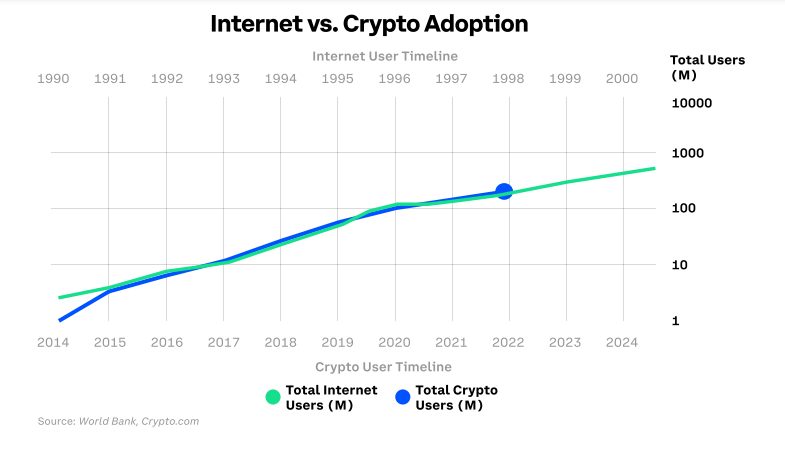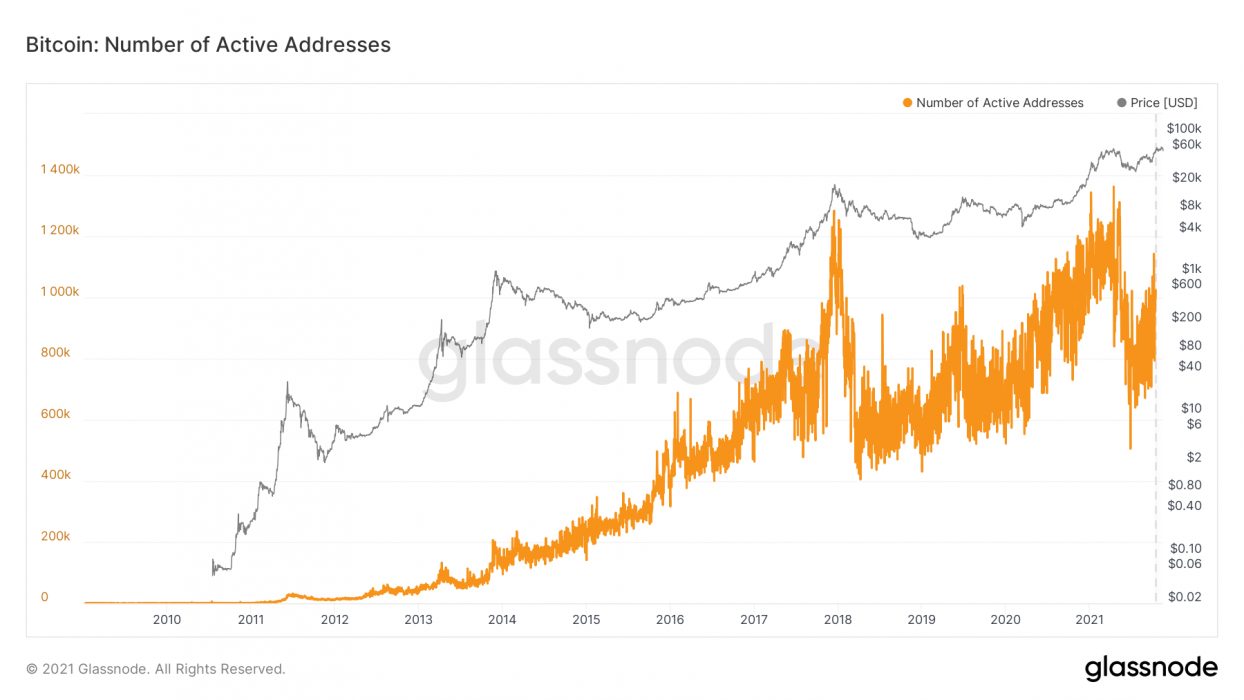Crypto Adoption Rate is Mirroring Internet Adoption of the Late 1990s

Crypto adoption from 2014 to 2020 is resembling that of the internet from 1990 to 2000, the same years when the online boom was considered a scam and a bubble that would eventually burst.
The speed at which cryptocurrencies have taken off has been surprising. On one hand, detractors had to sit back and watch how crypto assets reached the mainstream mostly driven by institutions and renowned wealthy investors such as Paul Tudor Jones and Mark Cuban, collectively highlighting the benefits of crypto and blockchain technology.
But the crypto community could not have predicted the speed and extent of crypto adoption this year. In August, Crypto News Australia reported that global adoption had surged an incredible 880 percent over the past year, and the number of active addresses reached its peak on November 10 – the highest level since May.


At the beginning of November, the number of active bitcoin addresses stayed above 1 million for five days in a row. This, according to analytics firm Santiment, signals that prices will flirt with further all-time highs (ATHs) in the future.
Cryptocurrency adoption in Australia has advanced markedly. Earlier this month, the Commonwealth Bank of Australia (CBA) allowed users to buy, sell and hold crypto on its CommBank mobile app. However, Australia still has many challenges ahead with crypto adoption in terms of education and regulation.
Number of Users Engaging With Crypto Products Skyrockets
The number of users and institutions engaging with crypto and DeFi-related products has risen as well. According to Coinbase’s Q3 2021 Shareholder Letter, the number of users on the exchange earning yields on their crypto assets increased to a total of 2.8 million.
Meanwhile, crypto-native institutions have been keener to explore the DeFi space as the sector has experienced a boom. More institutions are using Ethereum to borrow and lend across several DeFi apps, as per a report from digital assets broker Genesis.






